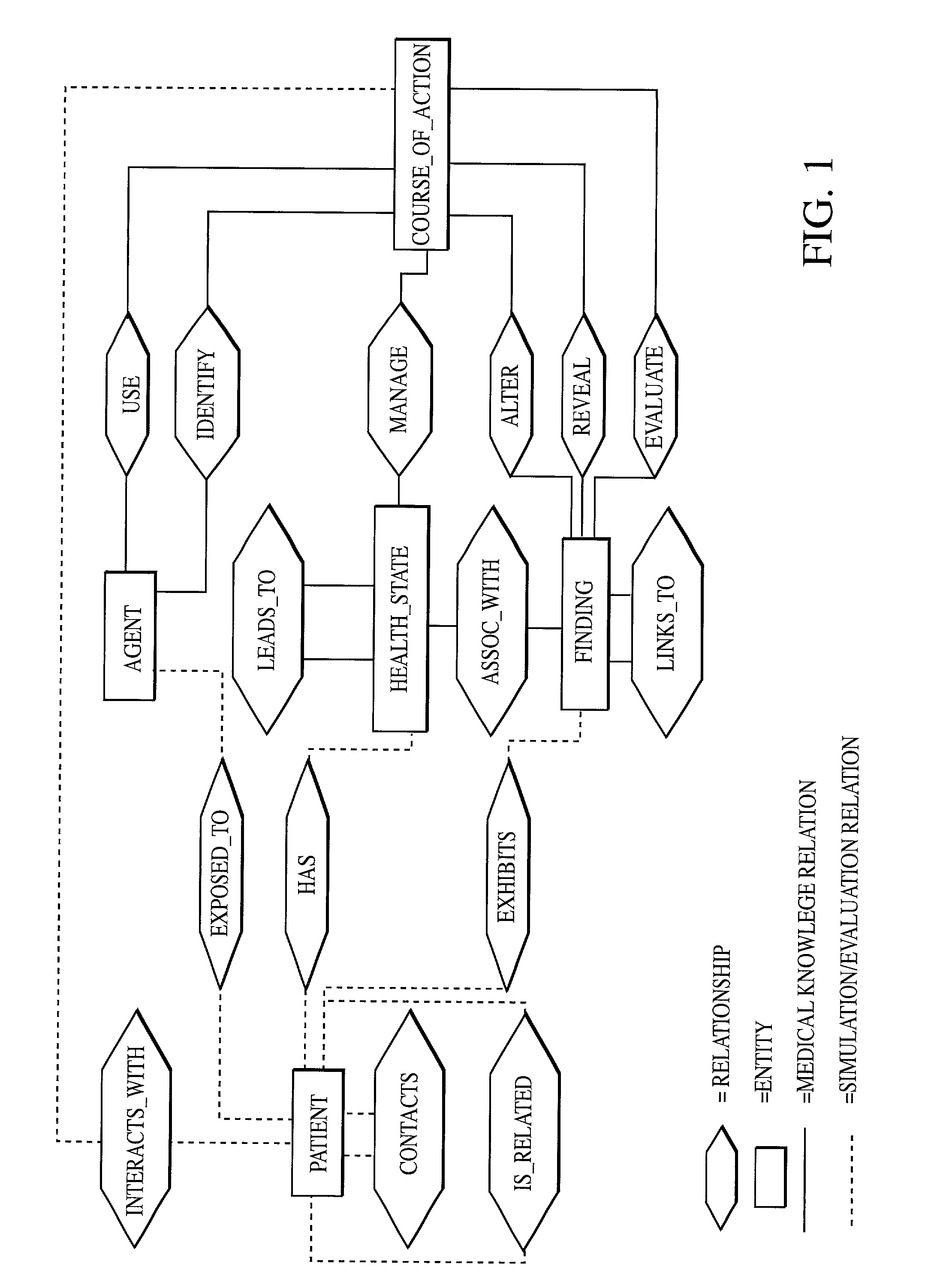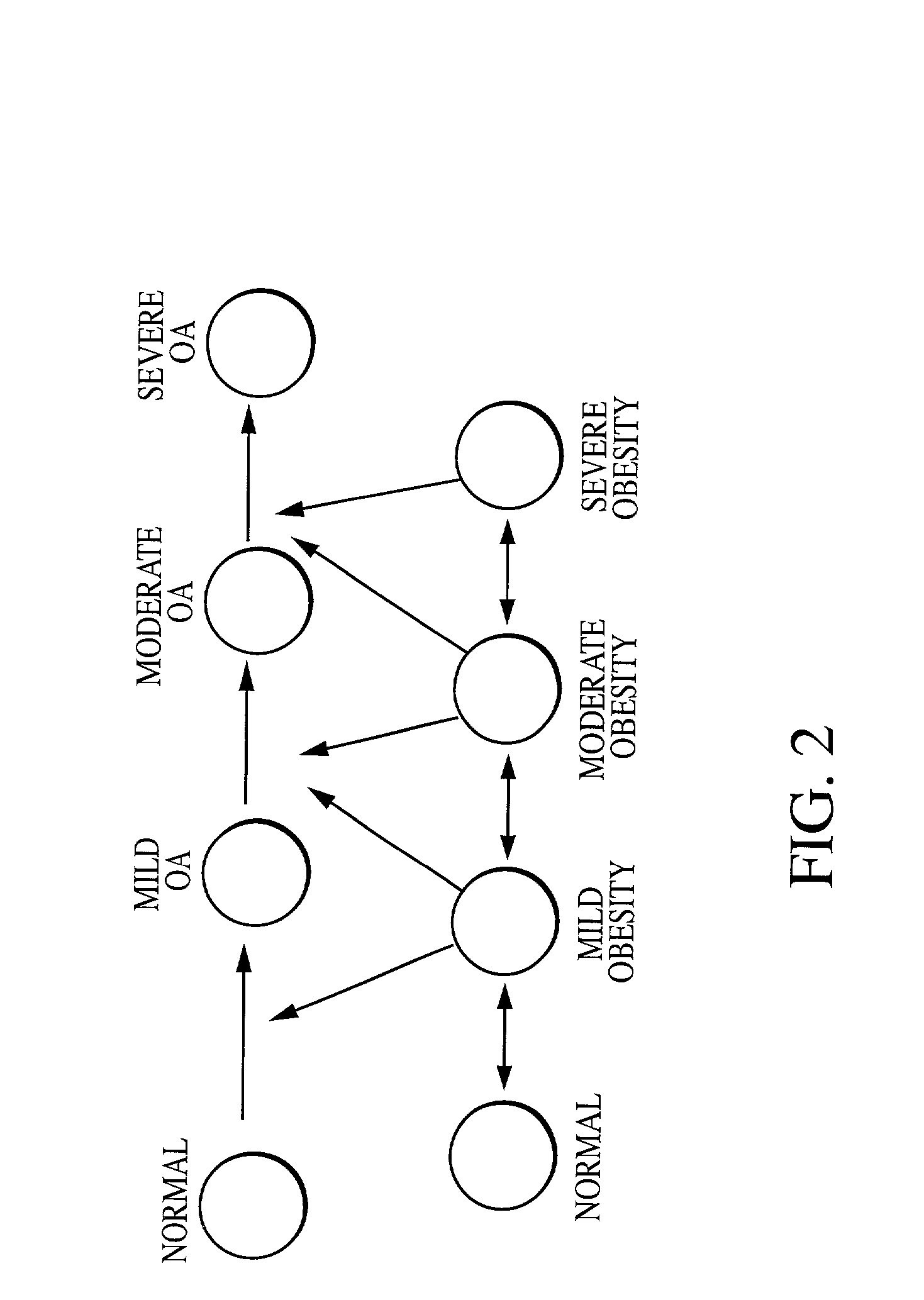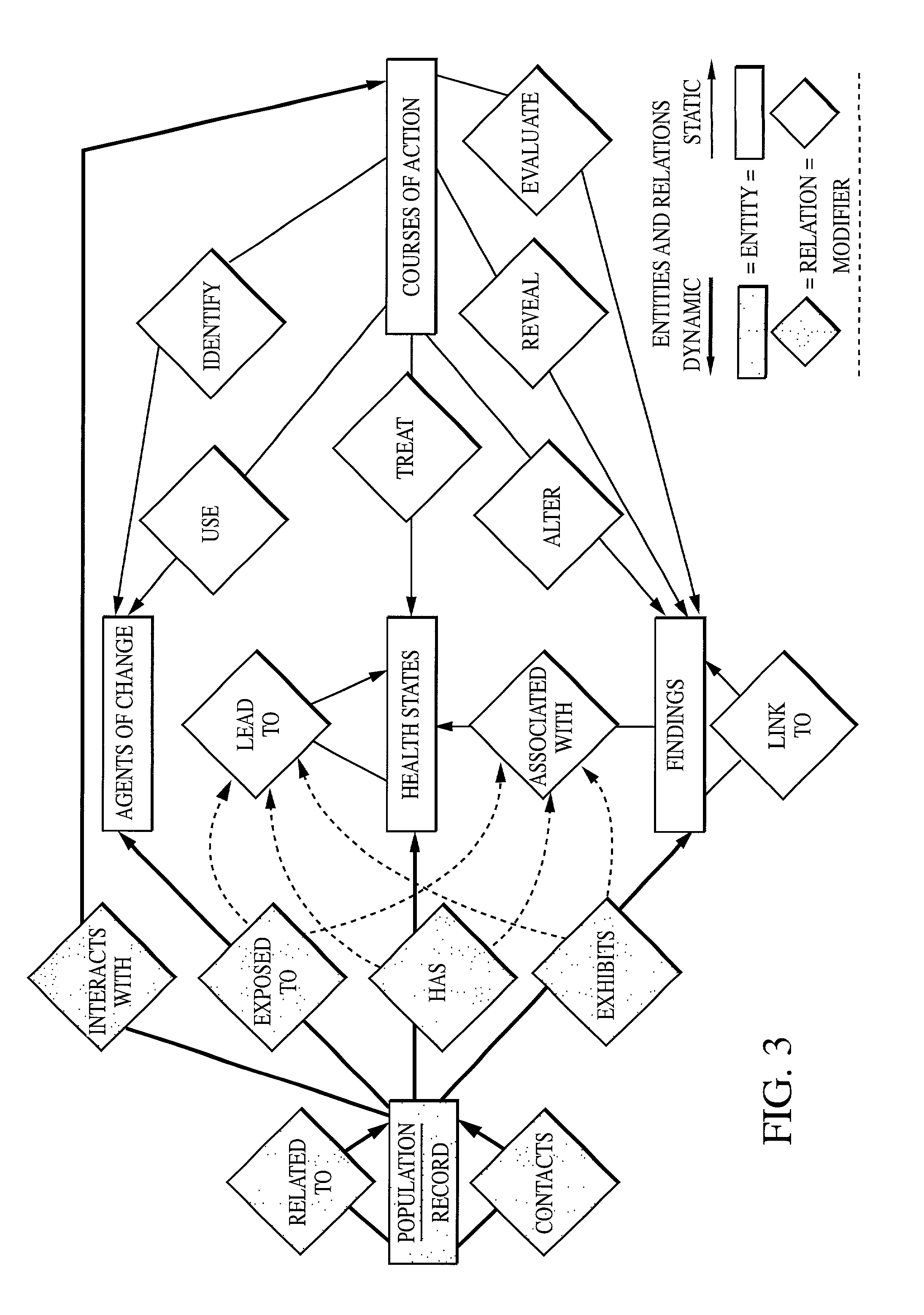Computer architecture and process of patient generation, evolution, and simulation for computer based testing system
a computer architecture and testing system technology, applied in the field of computer architecture and testing system generation, evolution, simulation of computer based testing system, can solve the problems of insufficient support for clinical problem solving using this format, inability to assess the problem solving ability of candidates, and inability to use this format for assessing clinical problem solving, etc., to achieve efficient and affordable scenarios, preserve the security of the certification process, and simplify administrative, economic and especially security issues
- Summary
- Abstract
- Description
- Claims
- Application Information
AI Technical Summary
Benefits of technology
Problems solved by technology
Method used
Image
Examples
Embodiment Construction
[0099] The computer-based testing system described herein represents knowledge at multiple levels of complexity. The computer-based testing system of the present invention partitions knowledge into fundamental types: Health States, Agents, Findings, Specific Findings, Patterns and Sub-patterns describe system behaviors and characteristics. Courses-of-Action describe tasks and methods used to apply, modify, and evaluate the health state information and characteristics described in the model. Subdivision of knowledge types in this manner facilitates the knowledge acquisition process. This subdivision also promotes multiple levels of knowledge abstraction, which enhances the system's ability to represent varying levels of complexity.
[0100] For example, reactive airways disease is represented as a series of health states: Normal (Non-reactive) Airways, Reactive Airways-Mild, Reactive Airways-Moderate, and Reactive Airways-Severe. Each health state contains identifiers which relate the p...
PUM
 Login to View More
Login to View More Abstract
Description
Claims
Application Information
 Login to View More
Login to View More - R&D
- Intellectual Property
- Life Sciences
- Materials
- Tech Scout
- Unparalleled Data Quality
- Higher Quality Content
- 60% Fewer Hallucinations
Browse by: Latest US Patents, China's latest patents, Technical Efficacy Thesaurus, Application Domain, Technology Topic, Popular Technical Reports.
© 2025 PatSnap. All rights reserved.Legal|Privacy policy|Modern Slavery Act Transparency Statement|Sitemap|About US| Contact US: help@patsnap.com



